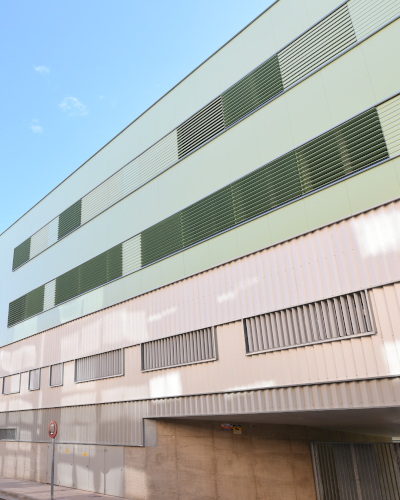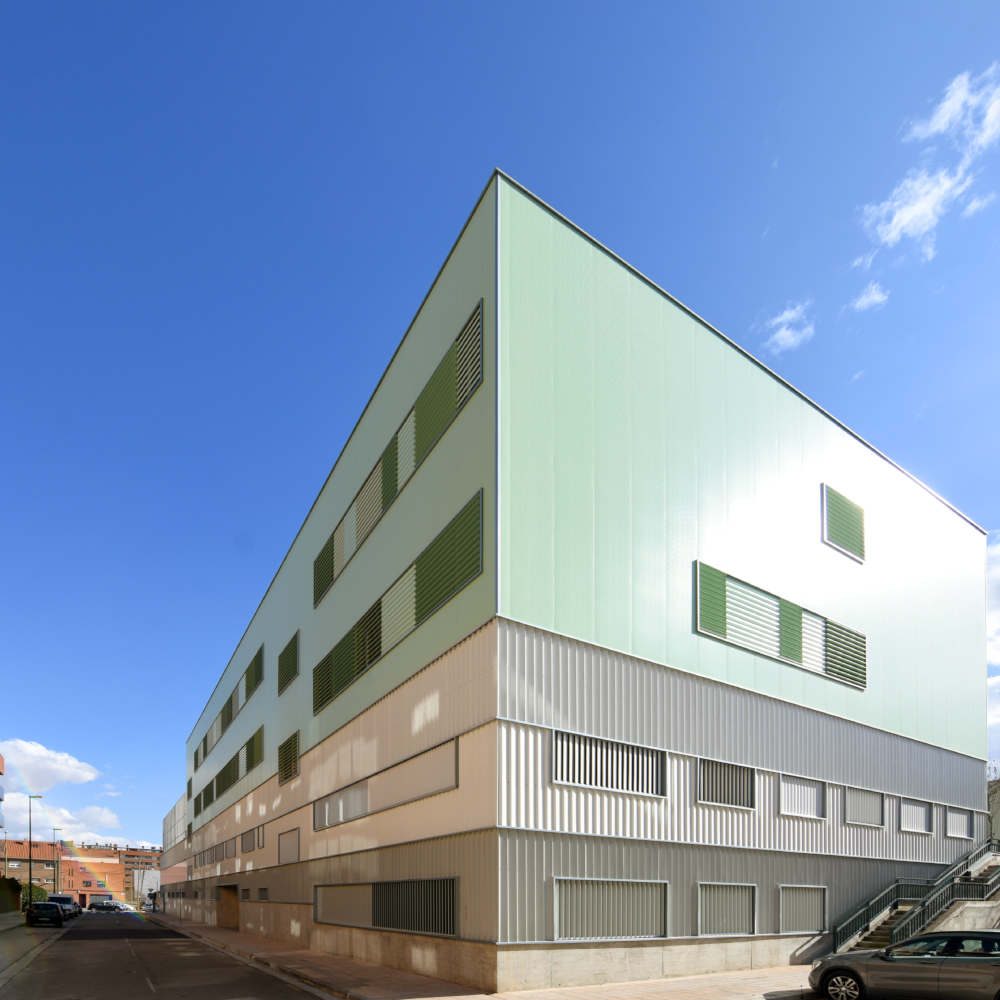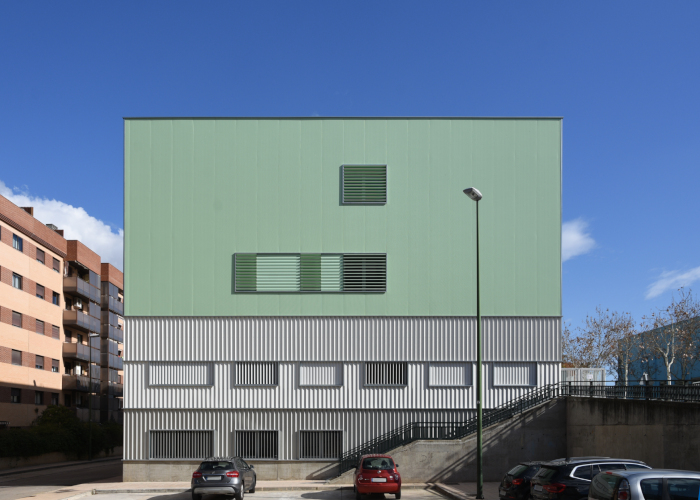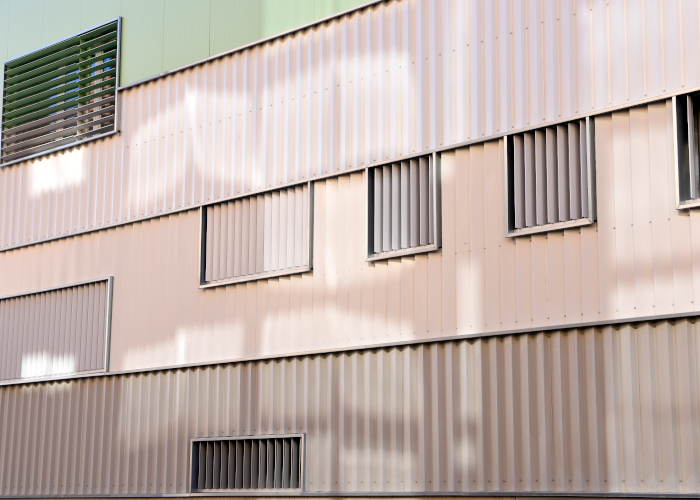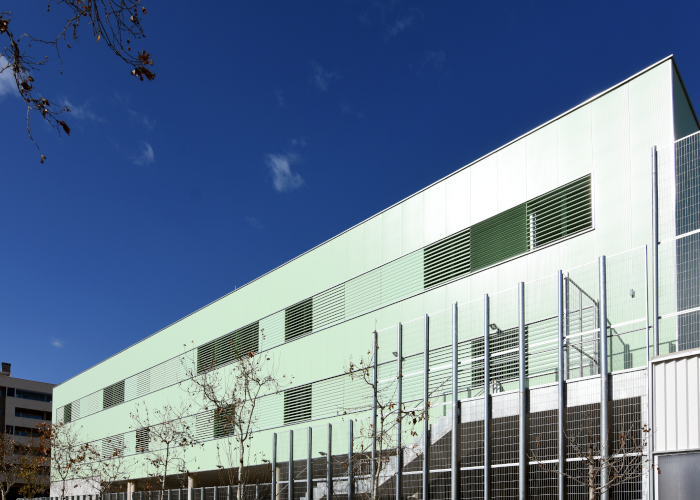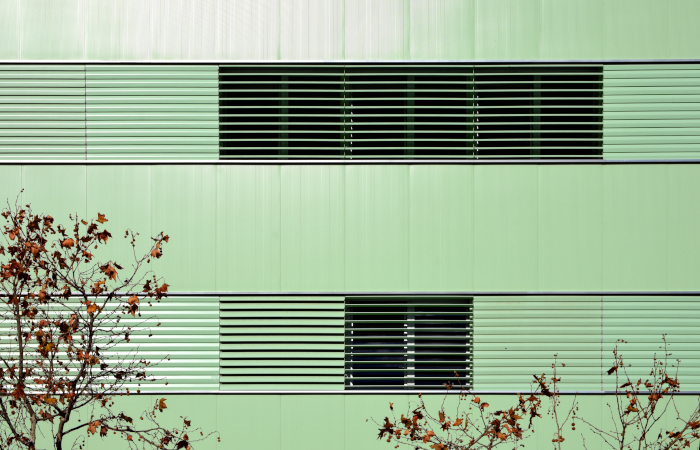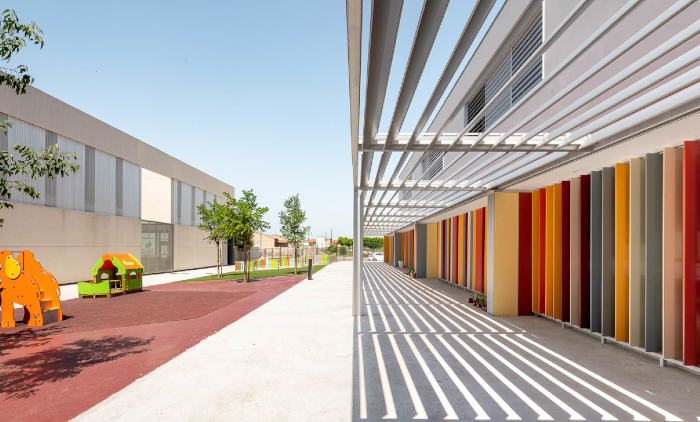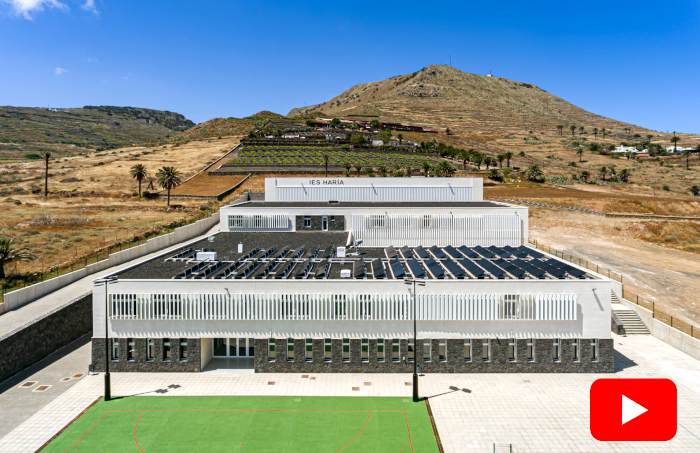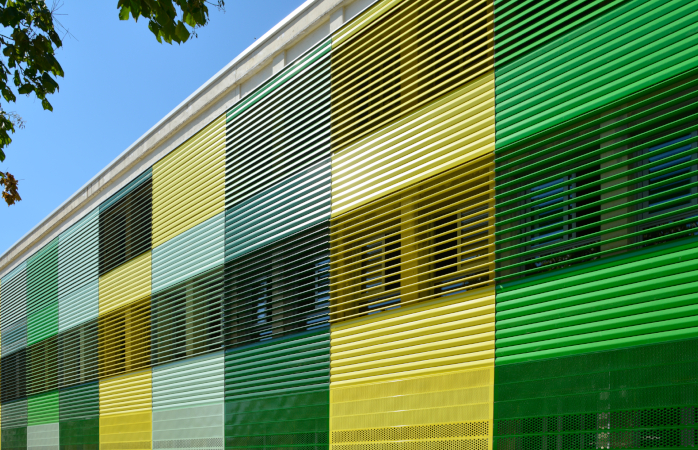Lattices with hidden mainels for the IES Rio Sena
The Barrio de Miralbueno is an area of the expansion of the city of Zaragoza, positioned to the west of the city, between the third and fourth belts. Unlike other similar neighbourhoods, Miralbueno has been established in the city for some time, and therefore, with its own infrastructures already executed. In any case, with the incorporation of new housing, these infrastructures have quickly become small, and have had to be reinforced with new centers, such as the Jules Verne School, which we already told you about here a few years ago, or the conversion of the CEIP Rio Sena, to CPI (Integrated Public School), incorporating the baccalaureate to the center, through a newly built building, which is what we will talk about in this post.
Location: Zaragoza, Aragon
Construction company: Marco Infraestructuras
Project: Cerrejón arquitectos
Typology: Educational architecture
Sun protection needs
The expansion project of the CPI Miralbueno has been carried out on a plot annexed to the CEIP, by means of an independent building, without connection to the previous building.
This format has significant construction advantages (independent design, with the possibility of incorporating new, more efficient construction systems), although it also poses new challenges, both in terms of its layout as a free-standing building, with all four sides open, and in terms of the needs of the centre, which are restricted both by the layout of the plot and by the educational needs of the project.
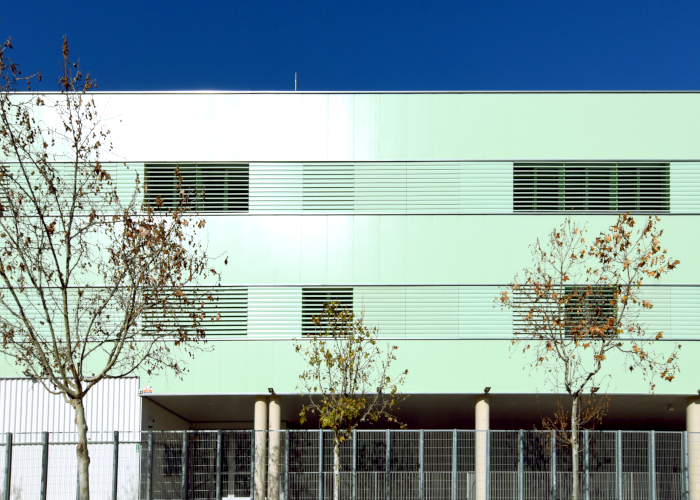
Our contribution to the project
The project relies on our
UPO-150
aluminium adjustable slat system for the sun protection of the open openings, and goes further by using the lattice system with hidden mainels. Thanks to this combination, we achieve the same functionality as traditional lattice systems, with a more subtle exterior aesthetic, which makes the slats appear to float in front of the façade.
The system, already incorporated in several projects previously, continues to be an innovative system on the market thanks to the flexibility of our slat stapling system, which allows us to adapt the lattice to the gap and not the other way around. In any case, it is a complex construction system, which requires a very precise installation, but on the other hand, does not imply additional burdens on the end users of the building, neither in terms of maintenance nor in terms of daily use.
The lattices are installed in a horizontal arrangement in the classroom areas of the second and third floors, while the lattices placed on the ground and first floors are in a vertical arrangement aligning with the sheet metal façade elements of the project (due to the layout of the plot and the optimization of the spaces, the accesses through one or the other façade are at different levels).
The new building, which has been designed in a range of three colours, integrates these same colours into the lattices to the point that the same slatted opening can incorporate two colours, thus maintaining the horizontal lines that extend around the perimeter and maintaining the visual effect proposed by the project. The lattice system with hidden mainels is integrated into this combination of colours, adapting its elements to the colour of the lattices in each of the modules.
Despite the radical aesthetic proposal of the lattice system with hidden mainels, one of its main advantages is that it maintains the possibility of manual or motorized drives, which allows them to be adapted to the specific needs of each module, and saves production and maintenance costs.

